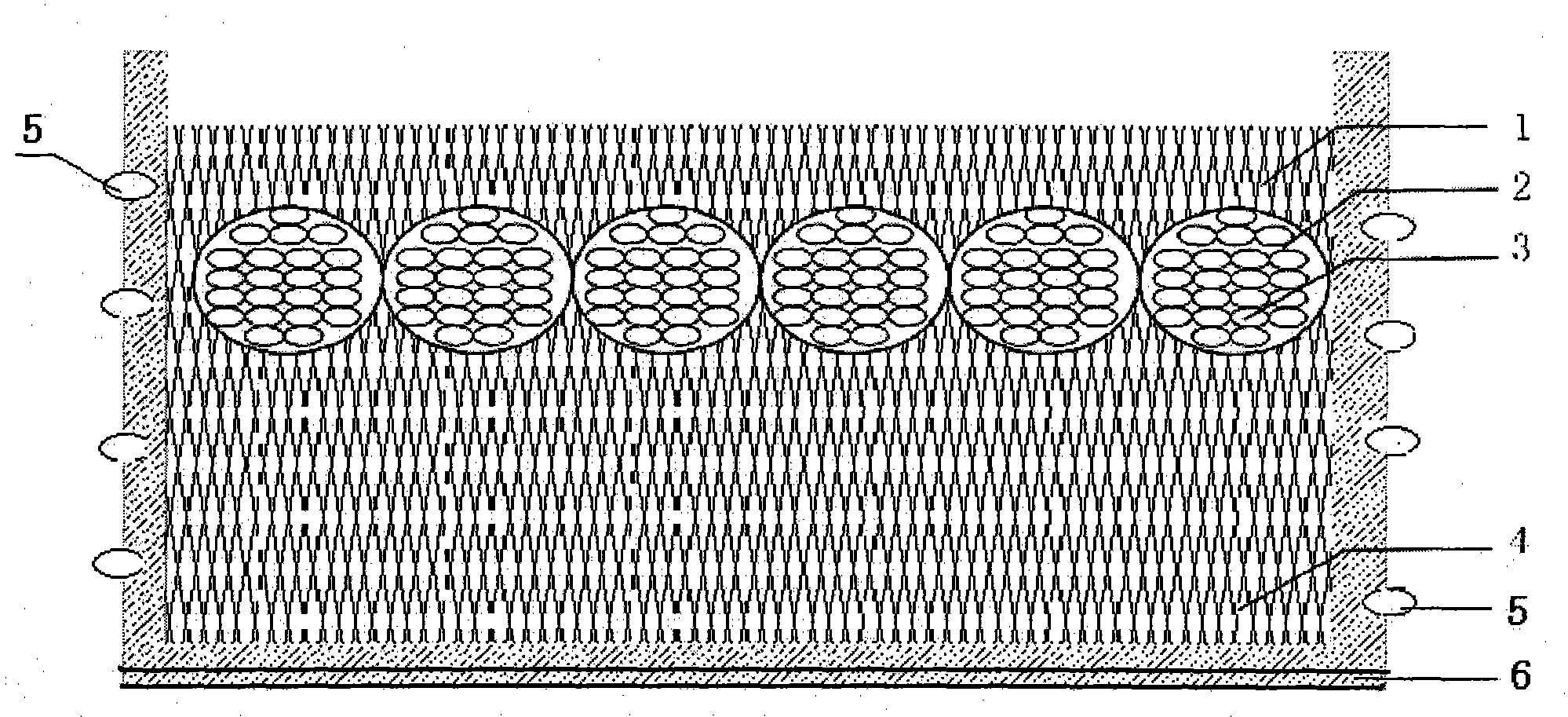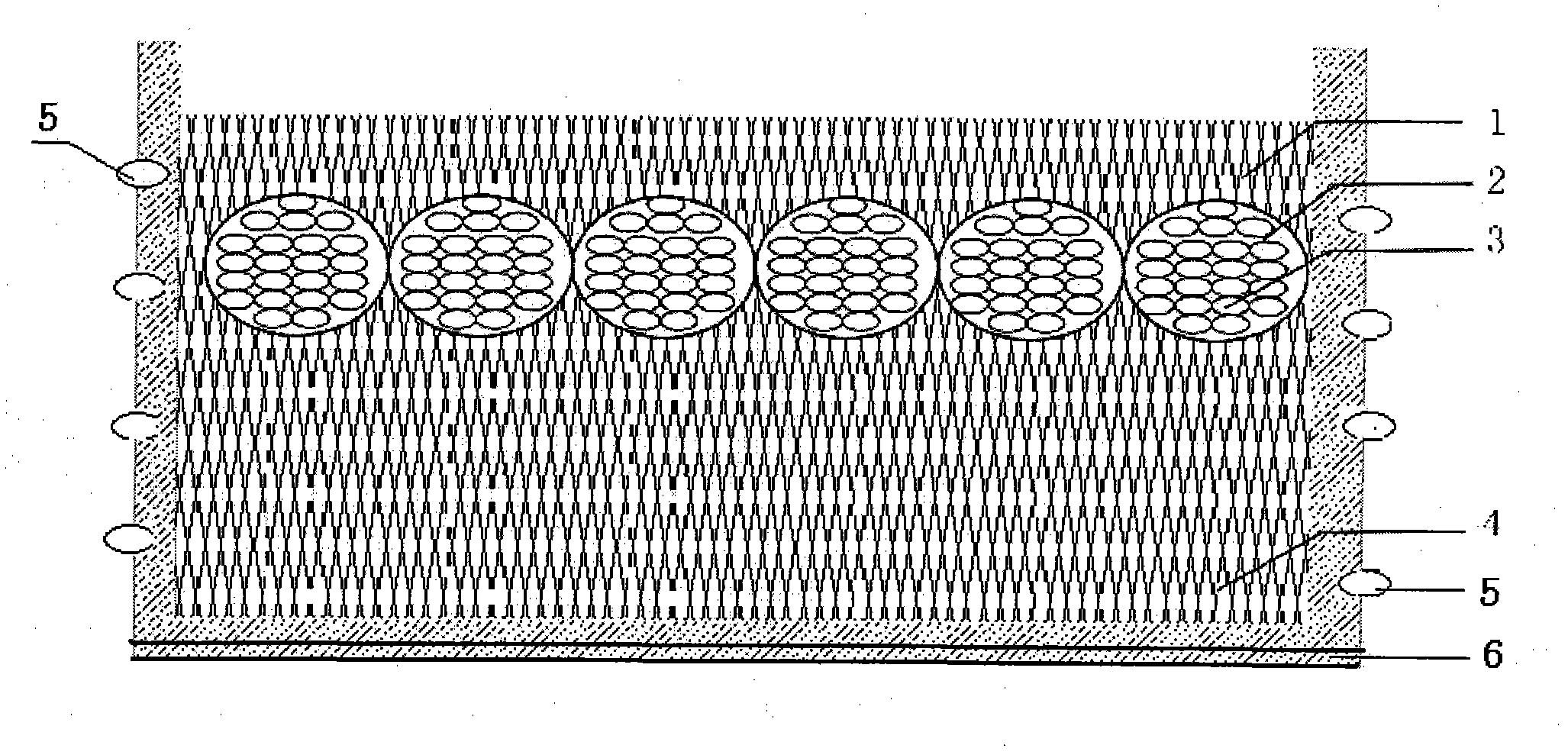Artificial hatch method of eggs of snake
A technology of artificial hatching and snake eggs, applied in animal husbandry and other directions, can solve the problems of less watering, insufficient humidity, and easy infection of snake eggs by mold.
- Summary
- Abstract
- Description
- Claims
- Application Information
AI Technical Summary
Problems solved by technology
Method used
Image
Examples
Embodiment 1
[0022] The inventor is indicating figure 1 Incubation tests were carried out in the production workshop of:
[0023] The lower bedding material 4 (vermiculite, non-woven fabric) used for hatching is cleaned, and after disinfection is fully absorbed, drain the dripping water on the surface, lay the bedding bed according to the traditional method, and stack 5-8 snake eggs for hatching. Use spacer 2 (plastic box, plastic sleeve, fresh-keeping bag) to seal the snake eggs and place them on the bedding bed, and then cover them with the hatching bedding material 1 (vermiculite, non-woven fabric) with a thickness of 3-5cm. Under normal circumstances, this method only needs humidification 1-2 time workload in the whole hatching process, treats that hatching is ripe, the seal of spacer 2 is opened, and hatching process work has just been finished all day, because pad material (vermiculite, no woven fabric) with high efficiency and balanced moisture retention, which is more guaranteed t...
Embodiment 2
[0025] The inventor is indicating figure 1 carried out in the production workshop of
[0026] The lower bedding material 4 (vermiculite, non-woven fabric) used for hatching is cleaned, and after the disinfection is fully absorbed, drain the surface and drip the water, lay the bedding bed according to the traditional method, and stack 4-7 snake eggs 3 required for hatching, Use spacer 2 (plastic box, plastic sleeve, fresh-keeping bag) to seal the snake eggs and place them on the bedding bed, and then cover them with the hatching bedding material 1 (vermiculite, non-woven fabric) with a thickness of 4-6cm. Under normal circumstances, this method only needs humidification 1-2 time workload in the whole hatching process, treats that hatching is ripe, the seal of spacer 2 is opened, and hatching process work has just been finished all day, because pad material (vermiculite, no Spun cloth) with high efficiency and balanced moisturizing, which is more guaranteed than snake eggs encl...
PUM
 Login to View More
Login to View More Abstract
Description
Claims
Application Information
 Login to View More
Login to View More - R&D
- Intellectual Property
- Life Sciences
- Materials
- Tech Scout
- Unparalleled Data Quality
- Higher Quality Content
- 60% Fewer Hallucinations
Browse by: Latest US Patents, China's latest patents, Technical Efficacy Thesaurus, Application Domain, Technology Topic, Popular Technical Reports.
© 2025 PatSnap. All rights reserved.Legal|Privacy policy|Modern Slavery Act Transparency Statement|Sitemap|About US| Contact US: help@patsnap.com


